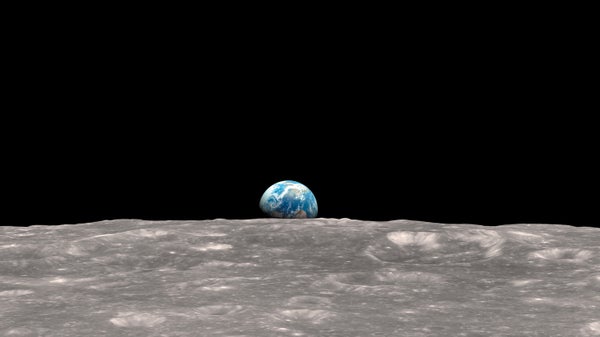Edited by Dava Sobel
From the bright backside of the moon
(never before seen by living eyes
and startled to be so violated)
William Anders, born in Hong Kong
Boy Scout, raised in California
One Holy Catholic & Apostolic pilot
trained to excel floats tumbles shifts
inside Apollo 8
With a Master of Science in nuclear engineering
the astronaut, authority in dosimetry
radiation effects and environmental control
is in charge of taking lunar pictures *click*
Crater Giordano Bruno *click* Mare Smythii
Apollo’s shadow crawls below lengthens
points: Oh, my God! Look at that ...
There’s the Earth coming up.
Wow!
On supporting science journalism
If you're enjoying this article, consider supporting our award-winning journalism by subscribing. By purchasing a subscription you are helping to ensure the future of impactful stories about the discoveries and ideas shaping our world today.
For slow as an opening flower
Up up above the barren moonscape
afloat in the stark black void
she silent rises into view
of three men sent to conquer space
and chart the craters of the moon
who now gasp in awe
of newfound recognition:
This planetary marbled cat’s-eye
oceanic atmospheric fragile
this blue pearl set in unforgiving sky
smack in the impossible Goldilocks zone
this mother to 3½ billion people and growing
to 9 million species and dwindling
flecked with oceans and clouds
held in by atmosphere as thin
in proportion as the skin to the apple
alone in all the known universe
a living planet
*click-snap*
is home
EarthRise!
